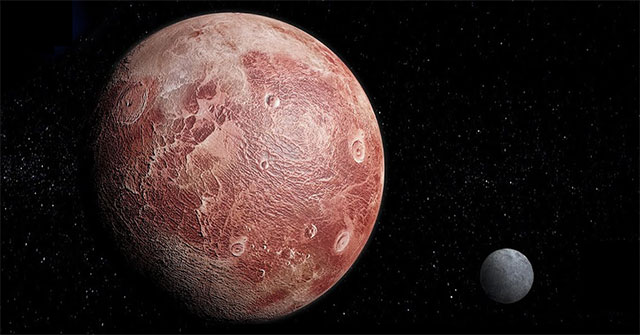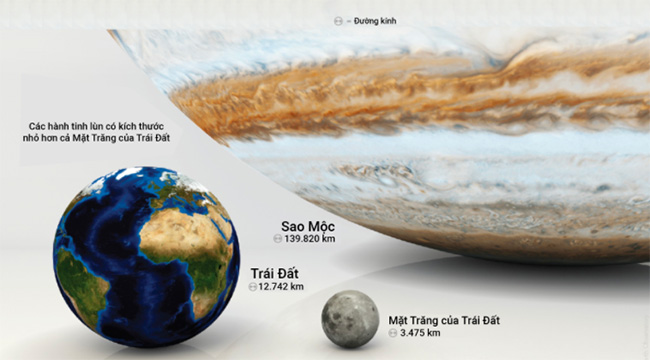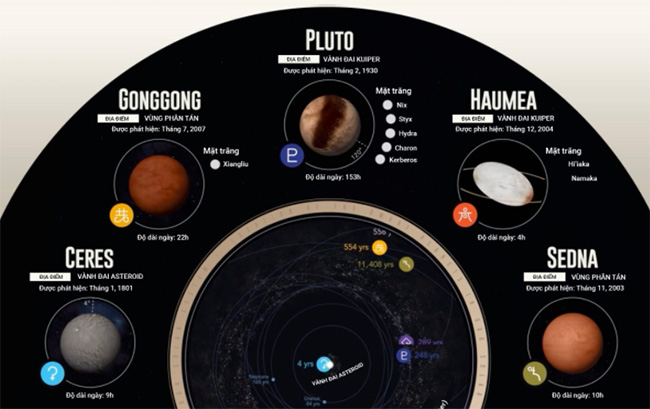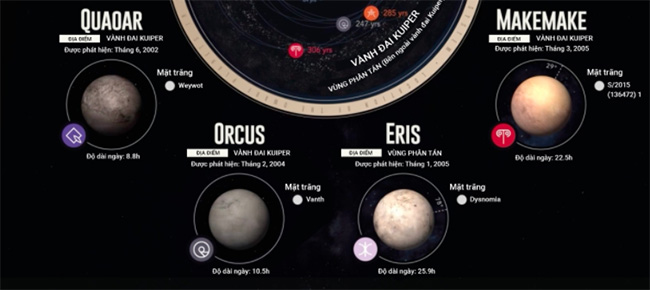Since its discovery in 1930, Pluto has had a bit of a rocky journey. Compared to other planets, Pluto is not only smaller but is even smaller than Earth’s moon. It also possesses extremely low gravitational pull.
At the same time, Pluto’s surface resembles that of terrestrial planets like Mars, Venus, or Earth, but differs from the nearby gas giants such as Uranus or Neptune. In fact, Pluto’s highly eccentric orbit led many scientists to initially believe that it originated from elsewhere in space and was drawn in by the Sun’s gravity.

Pluto was reclassified as a dwarf planet in 2006.
These characteristics have challenged the scientific perspective on whether Pluto should be classified as a planet for many years. It wasn’t until the discovery of Eris in 2005 that the International Astronomical Union (IAU) established classification criteria for Eris and other objects with similar characteristics to Pluto. Since then, the definition of dwarf planets has been created, and Pluto was reclassified in 2006.
So what exactly is a dwarf planet, how do they differ from “real” planets, and what are their characteristics?
History of Dwarf Planets
A dwarf planet is a celestial body that nearly meets the definition of a “real” planet. According to the IAU, which sets definitions for planetary science, a planet must:
- Orbit the Sun.
- Have enough mass to assume a nearly round shape.
- Dominate its orbit and not share it with other objects.
Dwarf planets do not have their own orbits. This is the main reason Pluto lost its status, as it shares part of its orbit with the Kuiper Belt, a dense region of icy celestial bodies.
Based on this definition, the IAU has recognized five dwarf planets: Pluto, Eris, Makemake, Haumea, and Ceres. There are four additional celestial bodies, Orcus, Sedna, Gonggong, and Quaoar, that are widely accepted by the scientific community as dwarf planets.
It is possible to discover six more dwarf planets in the coming years, with predictions suggesting that there may be over 200 other dwarf planets existing in the Solar System, located beyond the Kuiper Belt.
Ceres is the earliest known and smallest dwarf planet currently recognized. Originally classified as an asteroid in 1801, it was confirmed as a dwarf planet in 2006. Ceres is located between Mars and Jupiter in the asteroid belt and is the closest dwarf planet to Earth.
Interesting Facts About Dwarf Planets
Here are a few interesting facts about the dwarf planets discovered in our Solar System:
Ceres loses 6 kg of water vapor every second
The Herschel Space Telescope observed plumes of water vapor rising from Ceres’ surface. This occurs when a portion of Ceres’ icy surface warms up and turns into water vapor.
A day on Haumea lasts 3.9 hours
Haumea has a unique appearance due to its rapid rotation, which compresses the planet into an egg-like shape. Its rotation speed and collisional origin also make Haumea one of the densest known dwarf planets discovered to date.
Eris was once considered the location of the tenth planet
Eris is the heaviest dwarf planet in the Solar System, exceeding 28% of Pluto’s mass. Therefore, it was a strong candidate to be the tenth planet but did not meet the criteria set by the IAU.
Pluto is covered 1/3 in ice
This planet’s composition consists of 2/3 rock and 1/3 ice, primarily a mixture of methane and carbon dioxide gases. A day on Pluto lasts 153.6 hours, approximately 6.4 Earth days, making it one of the slowest rotating dwarf planets.
























































